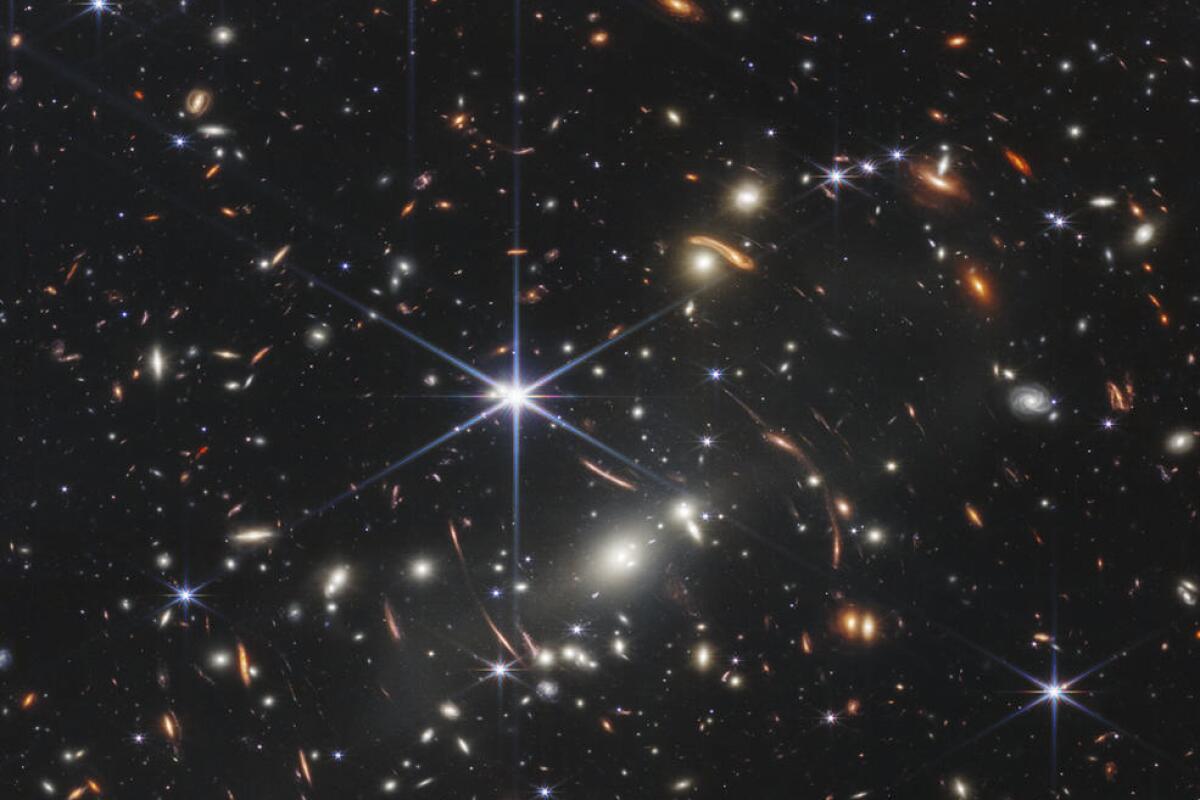Opinion: Science could finally discover aliens. What does that mean?

- Share via
Are we alone? Is life around us a cosmic accident that only happened once on this lonely planet, making human beings the only technological civilization anywhere? Or is the universe teeming with life, and perhaps even intelligence and self-awareness?
These questions have haunted humanity for millennia. Science is now poised to take a fantastic leap forward in answering them.
On Oct. 30, 1938, Americans panicked over a broadcast of H.G. Wells’ “The War of the Worlds.” But instead of fear, the takeaway should be: We’re the aliens and the aliens are us.
Over the next few decades, we will finally gain hard data that will help us answer our questions about alien life. But as we come ever closer to that milestone, another equally pressing question emerges. What would finding alien life — or not — mean for us all?
Many people believe that answers about life in the universe will come from Earth’s own skies via UFOs — or as our government has taken to calling them, Unidentified Aerial Phenomena. Recent years have seen the Pentagon acknowledging pilots’ reports of UAP and creating a related office, Congress holding UAP hearings and NASA launching its own study of the phenomena.
This openness is good, and a true scientific inquiry will be useful for everybody. Scientists, however, have quite brutal requirements for linking evidence to a claim as extraordinary as saying life exists beyond Earth. The kind of evidence science needs to link UAP to anything non-human simply does not yet exist. Earlier this year, at a NASA panel hearing, a Pentagon official reported that only a small percentage of identified cases (an estimated 2% to 5%) resisted conventional explanations, such as balloons or aircraft. Some of the remaining cases just didn’t have enough data to begin formulating an explanation. Earth’s skies are simply not awash with alien phenomena.
The stars, however, hold a different promise.
The government has renewed interest in UFOs. Scientists can show what it looks like to investigate the possibility of alien life rationally.
Over the last few decades, the science of astrobiology — the study of life in its cosmic context — has exploded. We have discovered that most stars in the sky host a family of worlds. Many of those stars host a planet that orbits at the right distance for liquid water to exist on its surface, one of the prerequisites for life to form. All these distant worlds — called “exoplanets” in astrophysics — have transformed the search for life in the cosmos. We now know exactly where to look for life and, even more remarkable, how to look.
Powerful instruments including the James Webb Space Telescope can peer into the atmospheres of these alien worlds to search for “signatures” of life’s activity. Biosignatures include oxygen in the atmosphere that likely would not be there without life to produce it. Likewise, the combined activity of a technological civilization will imprint technosignatures in light from the host planet. I am the principal investigator of a NASA-funded effort to explore possible technosignatures. Our group, along with others, has already shown how industrial chemicals, artificial illumination and even solar energy collectors produce technosignatures that we may soon be able to detect with existing and planned telescopes.
People sometimes ask me how the discovery of alien life could matter if we don’t have the chance to send a ship to collect a sample, or meet and communicate with “them” directly. What exactly will change if we do find, through a telescope, scientific evidence of extraterrestrial life?
If we’re hoping that more public attention to military encounters with strange aircraft will help us answer questions about extraterrestrial life, we might want to think again.
Finding life of any kind beyond Earth would represent the most important, ground-breaking discovery in human history. Life, unlike any other physical system in the universe, creates, innovates and goes beyond itself. If you give me a star right after it forms, the laws of physics allow me to predict its future billions of years from now (other than small details). With a microbe, on the other hand, we simply cannot say what will happen over billions of years. Evolution could yield something as weird as a giant rabbit that can punch you in the face (a kangaroo).
That remarkable creative power means that even a single additional example of life out there would imply that, likely, there are a lot more examples. And if we allow for the possibility of other intelligent, technologically capable species, then it becomes truly impossible to know how far life can go.
The discovery of even a single other technological society would also offer an island of hope in the turbulent ocean of our history. Research my colleagues and I conducted in 2020 showed that any civilization we find would probably be older than us. Finding an exo-civilization could show us that somebody made it — that long-lived, sustainable civilizations are something the universe does. That means we might make it as well.
Consider what happened after another major astronomical discovery hundreds of years ago: that the Earth revolved around the sun, not the other way around. It turned out the sun didn’t come up in the morning; our horizon spun down. Even though nothing had actually changed in people’s lives, the simple facts dethroning the Earth from its central place in the cosmos played a central role in rewiring humanity’s understanding of itself, and it helped prompt the Renaissance and Enlightenment.
The search for alien life anywhere, no matter what its outcome, promises an even greater effect. Everything we understand about ourselves and the universe we inhabit would change. So are we ready?
Adam Frank is a professor of astrophysics at the University of Rochester. His book “The Little Book of Aliens” was published this month.
More to Read
A cure for the common opinion
Get thought-provoking perspectives with our weekly newsletter.
You may occasionally receive promotional content from the Los Angeles Times.













